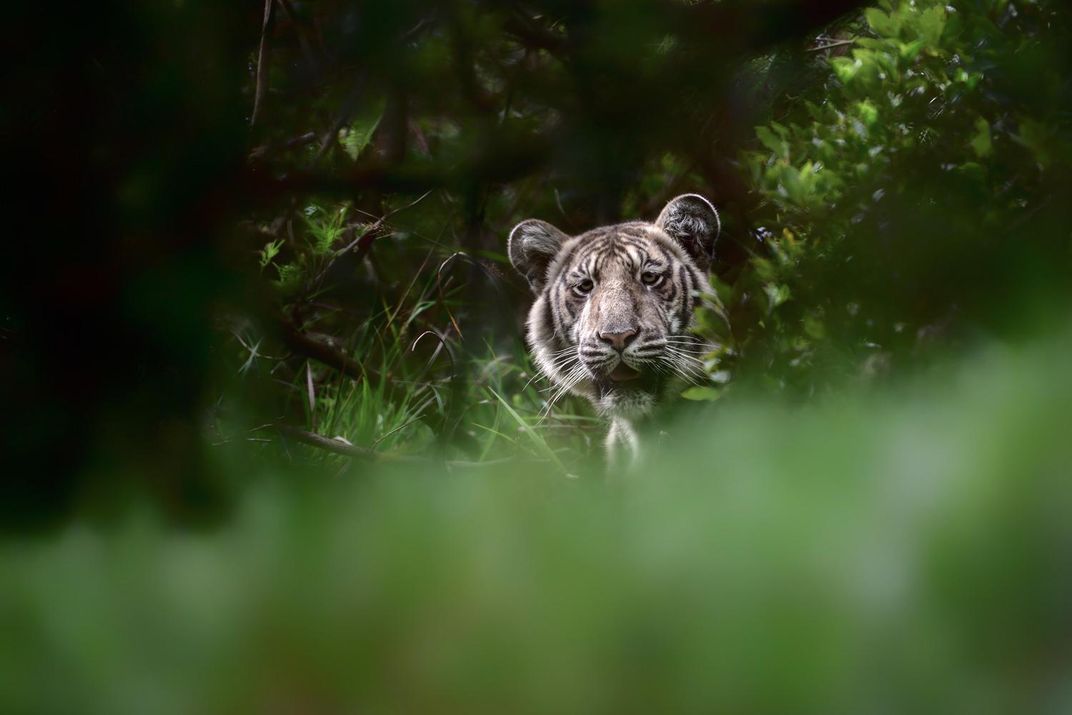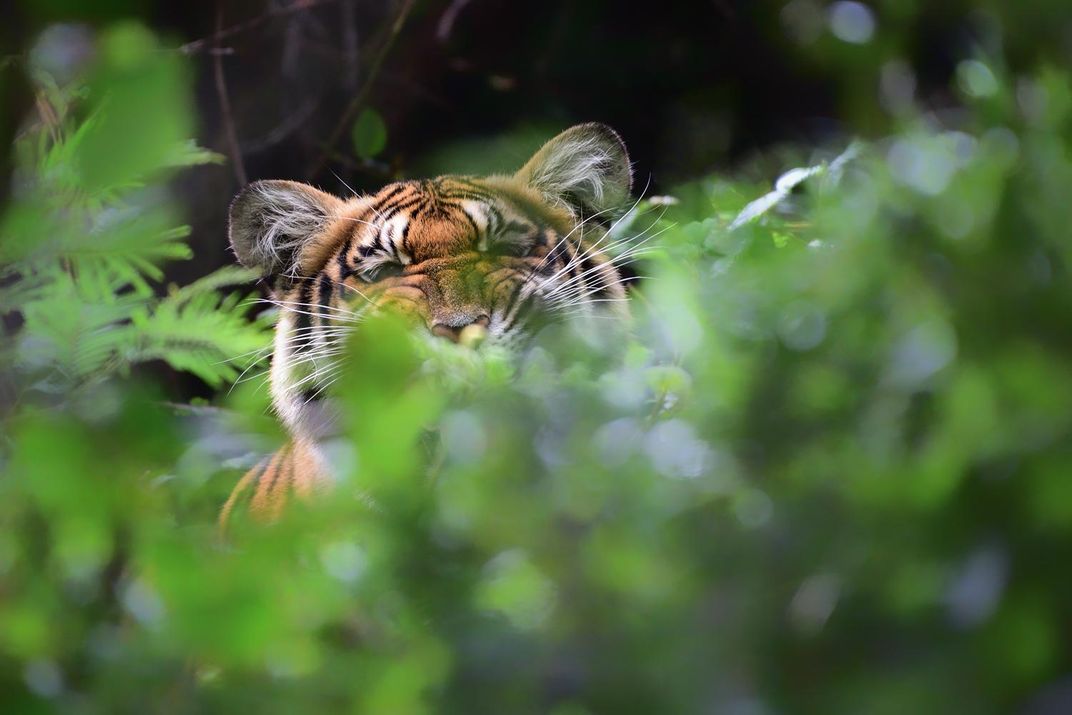Stunning Images Capture Rare Pale Tiger in India
An unusual genetic combination likely led to the creature’s exceptionally light coloration
/https://tf-cmsv2-smithsonianmag-media.s3.amazonaws.com/filer/5b/75/5b75ad08-a906-4105-b222-69ac13ca1743/ckj_3964_web.jpg)
Last week, wildlife photographer Nilanjan Ray was driving through the mountainous Nilgiri Biosphere Reserve in South India with a forest guide when he spotted a tiger crossing the road 200 feet in front of them. Ray stopped and began photographing the tiger as it jumped into the undergrowth, reports Ashish Ittyerah Joseph at The Times of India. It wasn't until the tiger briefly reemerged, when he noticed it wasn't any ordinary tiger: It was very pale, verging on white. It turns out, Ray had captured images of the palest tiger seen in India in a very long time.
Ray’s tiger is not a white tiger, like those favored by Siegfried & Roy. The last truly wild white tiger was shot in India in 1958, reports Michael Safi at The Guardian, though some tigers sporting a white-ish coloring are still bred in captivity. Instead, Ray’s tiger is a distinct color morph known as a “pale tiger,” which has very light fur color with a faint orange tint.
The creature was likely a sub-adult tiger, but its age and sex are unknown. Ray consulted experts about the find, learning that the reason for this coloration is likely due to genetic variation. "It is possible that this happened due to a unique combination of its parents’ genes," he tells The Times of India.
He explains this further in an e-mail to Smithsonian.com: "Skin color and fur coat in mammals are controlled by multiple genes, and ... random mating and varied genetic recombination have resulted in this rare and very pale-colored tiger."
Ray’s tiger may be as pale as tigers come without being white. “It is the palest tiger I have ever seen on the record or heard about in literature,” Belinda Wright, the founder of the Wildlife Protection Society of India tells Safi. “You occasionally see lighter-colored tigers, but they’re nothing compared to this one. There are also some pale tigers in captivity, particularly in the US, but these are ‘cocktail’ tigers that are bred that way, with genes from white tigers.”
Ray tells Joseph that after spotting the tiger and photographing it while it skulked in the bushes, another orange tiger appeared. This startling contrast shows just how different the pale tiger is.
While the naturally occurring pale tiger seems to be healthy, the same can’t be said of the white tigers currently in captivity. Because the gene pool is so small, white tigers are only produced through inbreeding, which can lead to health problems for the tigers. In fact, the Association of Zoos and Aquariums (AZA) condemns the practice of breeding white tigers. They’ve also taken a stand against the interbreeding of species to produce hybrid franken-cats like tigons and ligers.
Besides causing a host of medical problems for the animals, these unusual creatures also take the spotlight off the wild population of tigers, whatever their color morph, which are truly in trouble. “Of greater concern, in some cases, there exists the misconception that these unusual color morphs, or other phenotypic aberrations, may represent a separate endangered species in need of conservation,” the AZA writes in its policy statement.
So rather than spark concern for these ghostly feline iterations, these new vibrant pictures of the pale tiger will hopefully shed some light on the plight of all big cats and inspire more people to help protect them. Ray tells The Times of India that he informed conservation officials of the pale tiger's exact location, but has agreed not to release the information to prevent crowds (or poachers) from disturbing the creature.

